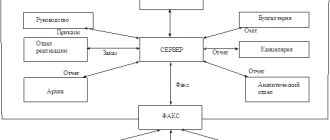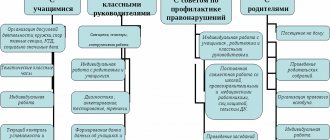| Kind of work: | Essay |
| Date added: | 21.01.2020 |
- This type of work is not a scientific work, it is not a finished final qualifying work!
- This type of work is a finished result of processing, structuring and formatting collected information intended for use as a source of material for independent preparation of educational work.
If you have a hard time understanding this topic, write to me on WhatsApp, we’ll look into your topic, agree on a deadline, and I’ll help you!
If you want to learn how to correctly carry out and write abstracts on any subject, then on the page “what is an abstract and how to do it” I wrote in detail.
Introduction
Human society is unthinkable without communication. Communication is a necessary condition for human existence, without which it is impossible to fully form not only individual mental functions, processes and properties of a person, but also the personality as a whole. The reality and the need for communication are determined by joint activity: in order to live, people are forced to interact. An always active person, whose activities intersect with the activities of other people, communicates. Communication allows you to organize social activities and enrich them with new connections and relationships between people.
Verbal means of communication
Spoken speech is still the most common way of communication
It is not enough to have good diction to be understood. You must be clear about what you want to say. You must also choose your words so that your message is understood correctly. If a person must speak to a large audience, he formulates a talking point for himself or otherwise prepares for a report. But in everyday life, oral communication requires spontaneity, and this can cause anxiety, uncertainty and even fear. Work on oral communication can begin with vocabulary development. Often people are embarrassed to use their rich vocabulary, not wanting to show off their education for fear of appearing arrogant. A very important ability associated with oral speech is the ability to hold the attention of listeners. If you look someone in the audience straight in the eyes when you speak, you are guaranteed to get their attention. Conversely, if you express your thoughts in a monotone voice, while your eyes are glued to a prepared piece of paper, you will soon find that the audience is not listening to you. Visual contact with the audience is also useful because it allows the speaker to gauge the audience's reaction. The most effective, as a rule, is personal communication, that is, communication in which two people participate. Psychologists have found that open-ended questions promote communication more. A closed question (“Do you like your job?”) can be answered with a simple “yes” or “no,” while an open question (“What do you like about your job?”) requires an extended answer.
What is nonverbal communication
Nonverbal communication
to such means of communication as facial expressions, gestures, postures, touches, intonations, changes in the circumstances of communication - that is, those that are carried out without the use of words. The human body, which has a huge number of expressive capabilities, becomes the instrument of such communication.
At the same time, “non-verbal communication” often occurs unconsciously for one or all participants in communication. “Body language” is capable of revealing even what we would not like to discover in ourselves. And the reaction to a nonverbal message also often occurs unconsciously. Meanwhile, it makes sense to learn to recognize non-speech signals in order to make the communication process more effective.
Most often, both means of communication are used simultaneously. Many people tend to gesticulate when speaking, reinforcing their words with their hands and grimaces and clarifying their meaning. In some cultures, gesturing is considered bad manners, but even there it is not possible to completely get rid of this “bad habit”.
Improving writing skills
People use written communication less often than oral communication. But with the advent of email, the importance of written communication has increased dramatically.
When selecting job candidates, employers are increasingly paying attention to their ability to write on paper. If you are asked to fill out a form when applying for a job, it may mean that the employer is testing your grammar and spelling skills. Any written communication has one clear advantage over oral communication. Write it, you have the opportunity to think, organize your thoughts and, if necessary, even rewrite it. However, there are two disadvantages of written communication. Firstly, a written message cannot convey the intonation of your voice and gestures (often, but not always: emoticons are a great achievement of humanity ), and secondly, you are deprived of instant feedback from the reader. To solve the first problem, it makes sense to add an emotional touch to your message. Here, as in oral communication, you can do a good job with a rich vocabulary. The second problem is easily solved if you know the educational level, interests and vocabulary of the people you are addressing. A short message written in simple language tends to make more sense to people.
If you are asked to fill out a form when applying for a job, it may mean that the employer is testing your grammar and spelling skills. Any written communication has one clear advantage over oral communication. Write it, you have the opportunity to think, organize your thoughts and, if necessary, even rewrite it. However, there are two disadvantages of written communication. Firstly, a written message cannot convey the intonation of your voice and gestures (often, but not always: emoticons are a great achievement of humanity ), and secondly, you are deprived of instant feedback from the reader. To solve the first problem, it makes sense to add an emotional touch to your message. Here, as in oral communication, you can do a good job with a rich vocabulary. The second problem is easily solved if you know the educational level, interests and vocabulary of the people you are addressing. A short message written in simple language tends to make more sense to people.
Features of verbal communication
The verbal method of communication is characteristic exclusively of human culture. Only people can express their thoughts with words. This is precisely the main distinguishing feature of such a relationship. In addition to this, we can highlight:
- variety of styles (business, conversational, scientific, artistic and others);
- exclusivity (words can describe any sign system);
- the ability to tell about a person (culture, level of knowledge, upbringing, character);
- assigning expressions and phrases to certain cultures, social groups (fascism, communism, nihilism, democracy);
- a necessity for implementation in life (the lack of verbal communication skills can become an insurmountable obstacle to personal and professional growth).
Meaning and connotation
A designation is the objective meaning of a word or, in other words, its dictionary definition. For example, in the explanatory dictionary, “father” is defined as “male parent.” This definition is the designation of the word. But in addition, both words we mentioned - “father” and “communism” - have an emotional connotation, that is, they have a special meaning that the dictionary definition cannot fully reveal.
Aggressive, accusatory tactics do not resolve the conflict, but force people to defend themselves and persistently defend their opinions. In such cases, it is advisable to use “I - statements” instead of “you - statements”, that is, talk about your experience, and not about the personal qualities of your opponent. After you have shared your feelings about the situation, you can suggest a possible way to resolve it.
Structure of Verbal Communication
Verbal communication is the most studied form of human communication. In addition, this is the most universal way of transmitting thoughts. In verbal human language it is possible to "translate" a message created by any other sign system.
The river side of communication has a complex multi-layered structure (from the distinctive features of the phoneme to the text and interior) and manifests itself in various stylistic varieties (various styles and genres, colloquial and literary language, dialects and sociolutes, etc.). All speech characteristics and other components of a communicative act contribute to its (successful or unsuccessful) implementation. This is a socially significant choice. This process is both endless and infinitely varied.
The system for ensuring speech communication - human language - is studied by linguistics. Without being able to present the theory of language within the framework of a communication manual.
Let us dwell on the most general communicative characteristics of speech. From the point of view of communication theory, speech is included in a single communicative act and has the following properties:
- speech is part of communicative culture and culture in general,
- speech contributes to the formation of the social role (social identity) of the communicant,
- With the help of speech, mutual social recognition of communicants is carried out,
- Social meanings are created in speech communication.
A communication strategy is a part of communicative behavior or communicative interaction in which a number of different verbal and nonverbal means are used to achieve a specific communicative goal.
A professional working in a certain field of public communication must have certain communication skills, i.e. He must
- Be able to effectively formulate a communication strategy;
- be able to effectively use various tactical communication methods;
- Be able to effectively present yourself (or your company) as a participant in the communication process.
Efficiency here is understood as the relationship between verbal and nonverbal techniques with the goals and objectives of communication, communicative intention and perspective, the systemic unity of the elements of a communication strategy, and the practical feasibility of individual tactical moves.
Abstracts:
- The main meaning of the message may not be expressed verbally at all, but only implied.
- 16 hours of contacts and communication.
- The most universal means of human communication is language.
- Failure to understand this often not only makes communication difficult, but also causes long-term conflicts.
- Perhaps you believe that you do not have such a message on your chest or back?
- The luxury of human communication A. Borisov, 1998.
- Moscow State Academy of Fine Chemical Technology named after.
- Rudakova E. V.
- We communicate almost all the time; the ability to do this is perhaps the most important skill in life.
- The lion's share of life, sometimes without realizing it, we communicate.
IN
IN
Nonverbal Communication
Interpersonal space. Sight. Language of poses and gestures
Nonverbal communication, better known as body language, includes all forms of human expression that are not based on words. Psychologists believe that reading nonverbal cues is essential for effective communication. Why are nonverbal cues so important in communication?
- About 70% of information is perceived by people through the visual (visual) channel;
- nonverbal signals allow you to understand the true feelings and thoughts of the interlocutor;
- our attitude towards the interlocutor is often formed under the influence of the first impression, which, in turn, is the result of the influence of non-verbal factors - gait, facial expressions, appearance, demeanor, clothing style, etc.
Nonverbal signals are especially valuable because they are spontaneous, unconscious and, unlike words, always sincere.
What is verbal communication
Verbal communication is the most familiar way for a person to transmit and receive information using oral or written speech. Such communication occurs between two or more people. To reproduce speech, a person has clear diction, a certain vocabulary and knowledge of the rules of communication.
An important role in the process of human communication through verbal communication is played by vocabulary and syntax. The first implies a certain set of words belonging to a particular language. The second dictates the rules for the formation of thoughts.
Verbal interaction has two important functions:
- Significative. With the help of words, a person can imagine any description and have an idea of any information received. Vocabulary helps a person analyze the information received, build connections between the objects about which information is received, and distribute the degree of significance (main, secondary).
- Communicative. Its task is to convey the attitude towards the information received or reproduced. When speaking, this is expressed through pauses, accents, and voice intonation. In a letter - neatness of writing, punctuation marks and direction of the text.
Despite the great importance of verbal communication in a person’s life, it has a number of disadvantages:
- inability to formulate your idea clearly and convey it;
- difficulties in perceiving someone else's narrative;
- misunderstanding of the information received;
- polysemy of the same words;
- linguistic difficulties between speakers of different cultures, religions, ages, etc.
Scientists believe that verbal communication occupies a minimal place, in terms of importance, in human interaction skills. The quantitative utility rate is only 15% compared to non-verbal skills. Science has given them 85% significance.
Subsystems of nonverbal communication
Spatial subsystem (interpersonal space).
Sight.
Optical-kinetic subsystem, which includes:
- Appearance of the interlocutor,
- facial expressions (facial expression),
- Pantomimyry (postures and gestures).
Paralinguistic or near subsystem, which includes:
- Voice quality,
- its range
- key,
- timbre.
Extra-linguistic or extra-linguistic subsystem, which includes:
- = rate of speech,
- = pauses,
- =laughter, etc.
Nonverbal communication
Although verbal symbols (words) are our primary means of encoding ideas to be communicated, we also use nonverbal symbols to convey messages. Nonverbal communication uses symbols other than words. Nonverbal communication often occurs simultaneously with verbal communication and can enhance or change the meaning of words. Exchanges of glances, facial expressions such as smiles and disapproval, raised eyebrows in confusion, lively or fixed glances, looks of approval or disapproval are all examples of nonverbal communication. Using a finger as an index finger, covering the mouth with one's hand, touching, and a limp posture are also nonverbal ways of conveying meaning.
Another type of nonverbal communication is formed by the way we pronounce words. This applies to intonation, voice modulation, fluency of speech, etc. As we know from experience, the way we pronounce words can significantly change their meaning.
Through nonverbal manifestations, the interlocutor shows his true attitude to what is happening. And our task in this case is to see and interpret these manifestations, that is, to understand what is behind them. Moreover, if you are aware of and manage your own nonverbal behavior, you have a very powerful tool for connecting with and influencing another person.
The role and importance of communication means for humans
Communication itself is one of the main attributes of human life. And all means are important: both verbal and non-verbal communication. Each means expresses its “share” of information, and the ability to read different “codes” helps to assess the situation as a whole.
Non-verbal communication, in particular, becomes necessary when verbal mutual understanding is impossible. For example, if the interlocutors speak different languages or one of them is deaf and dumb. Various sign languages have been developed for such purposes. Interestingly, in New Zealand the local sign language has the status of an official language; In this language, the English-speaking white population communicates with the Maori, an indigenous people whose representatives do not always agree to learn English.
As for ordinary situations, the importance of the non-verbal “part” of a conversation was shown by the Austrian writer Alan Pease; he states that only seven percent of information we receive from the verbal component of communication, and the rest we perceive through non-verbal signals. Researchers have also noticed that in recent years the role of non-verbal communication has increased significantly. One of the reasons for this may be caution: the interlocutor may well lie, hide information, and his true intentions can only be established by “reading” gestures and facial expressions. Increased tolerance also prevents people from using emotionally charged expressions in speech, and then nonverbal signals come to the rescue.
Detecting lies is one of the most important skills. The effect is based on the fact that most people do not control their emotions, so they may not correspond to the words spoken. Words can deceive, but their gestural “accompaniment” is not capable of this. Unless, of course, the interlocutor has learned to control himself and use facial expressions and gestures to further confuse the one with whom he is talking.
Learning to recognize non-speech information can take quite a long time. After all, there are not only well-known and understandable signals that are reflected even in phraseology (“head drooping,” “standing with mouth open,” etc.), but also rather subtle and non-obvious signs.
American writer Julius Fast once described an interesting incident. At one school there was a girl from Puerto Rico, whom the principal once found among a group of her peers smoking. All of these girls were arrogant and undisciplined, except for this Puerto Rican girl. Nevertheless, the director decided to punish her because he caught her in what he considered “suspicious behavior”: when talking, she diligently averted her eyes. The girl was saved by a local Spanish teacher, who explained to the director that in Puerto Rico, well-mannered girls never look adults in the eyes, which is a sign of respect.
It is obvious that the language of gestures, facial expressions, and intonations has a more ancient origin than “ordinary human” language. Indeed, articulate speech is a rather complex phenomenon, requiring not only a developed speech apparatus, but also the necessary level of abstract thinking. But nonverbal communication is widely available to animals. From them, apparently, we got most of the extra-speech signals.
In animals, postures, intonations of vocal cries, facial expressions express relations of superiority and submission, the choice of a partner for mating, friendship or enmity, and other information. Often, exchanging threatening postures and shouting can help avoid a fight, which may be disadvantageous to both parties. Primates, of course, have the richest system of gestures, postures and facial expressions, but many other animals also have their own sets of signals.
Non-verbal communication even allows us to contact our smaller brothers. The position of a cat or dog's tail can tell a lot about the animal's mood at the moment. Staring is an ominous signal for dogs and cats, especially if you look directly into their eyes.
Sensitivity, intuition and premonitions
When we say that a person is sensitive and intuitive, we mean that he (or she) has the ability to read another person's nonverbal cues and compare those cues to verbal cues. In other words, when we say that we have a feeling, or that our “sixth sense” tells us that someone said something that is not true, we actually mean that we have noticed a discrepancy between body language and words. said by this person. Lecturers call this audience sensitivity.
Women are usually more sensitive than men, and this explains the existence of such a thing as female intuition. Women have an innate ability to notice and decipher non-verbal signals, to capture the smallest details.
This female intuition is especially well developed in women raising young children.
Innate, genetic, acquired and cultural signals
Although much research has been done, there is heated debate about whether nonverbal cues are innate or learned, or whether they are passed on genetically or otherwise acquired. The evidence came from observations of blind, deaf, and deaf-blind people who would not have been able to learn nonverbalism through auditory or visual receptors. Observations were also made of the gestural behavior of various peoples and the behavior of our closest anthropological relatives, monkeys and macaques.
The German scientist Eibl-Eibesfeldt discovered that the ability to smile in children who are deaf or blind from birth appears without any learning or copying, which confirms the hypothesis of innate gesticulations.
Most nonverbal behavior is learned, and the meaning of many movements and gestures is culturally determined. Let's look at these aspects of body language.
Psychologists have long established that existing “body language” expresses what we do not want or cannot say. He is much more truthful and sincere than all the words we say to each other. Psychologists have long studied this phenomenon and came to a number of interesting conclusions. It turns out that a person subconsciously trusts not the words, but the way they were said. It has been established that the degree of trust in words is only 20%, while the degree of trust in non-verbal communication (posture, gestures, mutual positioning of interlocutors) is 30%. But most of all, oddly enough, we trust the intonations of the interlocutor and other paralinguistic components of nonverbal communication (rate of speech, pause, laughter, etc.).
If you penetrate the secrets of this amazing “body language”, you will easily understand all the secret thoughts of your interlocutor, you will be able to understand whether he is bored with you, whether he is lying to you or telling the truth.
Study materials.. first aid in studying...
Verbal communicationLet's look at how words do the job of conveying information. But first, let’s answer the question: are there many things around us or inside us that we could not describe in Words? At least imprecisely, uncertainly, approximately? Perhaps not enough. But words are the main fund of our sign system. If you imagine signs in the form of labels, then we humans paste words-labels over almost everything that we can perceive. The label can be changed: “chair” in Old Russian sounded like “table” (hence, by the way, the word “throne”), but the concept remains the same: “what they sit on.” From time to time, scientists enrich us with new words that more accurately “mean” reality than the previous ones, being the result of a deeper comprehension of it.
According to A.B. Dobrovich, the main difference between a person is; that he learned to separate their properties from objects and think of them as independently existing. All this was “meant” by words. And so words-signs began to float freely above reality, and the same sign can “descend” onto different fragments of it, different objects. “Stone” is a rock, a cobblestone, and a hewn slab. “Round” is the sun, the head, and the apple. The production of tools also taught people to note the essential properties and connections of objects. The very concept of materiality reflects the needs of our activities. It is important whether the grass is green, but it is immaterial whether the stone for the arrowhead is green or reddish, if both green and reddish are equally durable and easy to work with.
So, for a person, reality is “objectified,” while for an animal it is blurred. It is curious that remnants of such a rigid attachment can be found in the languages of peoples that for a long time developed outside the general culture. American researcher Boas discovered that the Eskimo language does not have a word for snow. Snow lying on the ground is called “aput”, and snow making up a snowdrift is called “kimuksuk”; falling snow is “kana”, and snow blown by the wind is “piksirpok”.
If the world is “objectified” for a person, this radically changes his perception of reality. He does not absorb it passively, but sees the world through a sieve of signs and symbols learned from childhood. It follows from this that his signs begin to perform a special function. Not only external communication - the function of notifying others, but also the function of notifying oneself about what is happening. A person reports about this to himself, as he would report - in the same signs - to others. Isn’t this the key to consciousness, that is, consciousness: knowledge about reality together with others?
Many animals seem to communicate with each other using rumbling, meowing, barking, screaming, etc. However, this cannot be called language, although in the head of each of them the same sound awakens the idea of the same fact of reality. One might think that animals learn to understand sounds in a group from childhood. They probably begin with a simple imitation of the facial expressions of their elders, with the reproduction of sounds common in a flock or herd. The conditioned reflex connects these sounds, postures, etc. - with real circumstances. However, this cannot be explained by simple learning alone. In herds that have never met; if these are animals of the same species, very similar facial expressions, vocal expressions; gestural habits. Consequently, they learn what is already planned by evolution, specified by genes. Apparently, nature itself took care of a form of interaction specific to each animal species.
In the strict sense of the word, it is possible to talk about communication through language only if each sound is given a special, unique meaning. The word "bread" can be expressed with different sounds in different languages. The main thing is that all people of a given country agree that this set of sounds corresponds to the concept of “bread”. Only then will this sound combination turn into a word that will become part of the language.
Language is a priceless human gift. “You can’t tell it with your tongue, you can’t spread it with your fingers,” people say. With the help of words you can tell about everything. “The main character of our language is the extreme ease with which everything is expressed in it: abstract thoughts, internal lyrical feelings, “the scurrying of life,” a cry of indignation, sparkling pranks, stunning passion,” wrote A.I. Herzen.
Language as a means of transmitting information using certain sounds; arose a very long time ago. It was very convenient to use sounds in cases where the interlocutors could not see each other in the dark or thickets. Language is a system of verbal signs developed in the process of its development by one or another people.
There are no fewer languages in the world, and even more, than there are different peoples. Scientists estimate that people currently speak almost 3,000 languages. Some are spoken by millions of people, others by a few. Probably, the more numerous the people, the more people know this language. Indeed, the majority of people in the world speak Chinese—over a billion people.
There are “thirteen great” languages—those spoken by at least 50 percent of the people on Earth. In addition to Chinese, English, Hindi, Urdu and Russian, we must mention Spanish - 210 million people, German - 100 million, Japanese - BUT million, French - 95 million, Bengali - 125 million, Indonesian - 130 million, Portuguese - 115 million, Italian - 65 million, Arabic - 127 million.
Which language can be called the most fashionable? Probably the one most often used for international contacts. If previously these were French and Spanish, now English is more often used, which is spoken by 350 million people.
Each of us who studied both our native and some foreign language at school knows that this is a rather difficult task. How many languages can one person learn? It turns out that as much as he wants. Observations show that the more languages a person knows, the easier it is for him to learn a new language. In this case, you first need to study the main languages, and then closely related ones.
If the famous German archaeologist Heinrich Schliemann took a year to study the first two foreign languages - French and English - then later he mastered a new language in a matter of weeks, or even days. So, for example, it happened with Spanish when Schliemann left for Venezuela, to his place of new service. “When I land in Caracas,” the scientist told friends in Hamburg before boarding the ship, “I will speak Spanish.” And indeed, during the voyage I learned this language. A book in Spanish helped, which Schliemann knew by heart in many languages. And every time he took up studying the language, he stocked up on a new translation of this book. He mastered 14 languages this way.
Cardinal Mezzofanti (1774-1849) knew more than 100 languages. German linguist. L.G. Schütz, a resident of Frankfurt am Main, spoke 270 languages! His contemporary A.S. was not inferior to him either. Pushkin by Dane R.H. Raek from Copenhagen. He traveled all over the world, knew 230 languages and became the author of 28 dictionaries! In 1961, Professor Geestermann, who spoke 132 languages, died in Germany: The living Italian Professor Tagliavani speaks approximately the same number of languages.
— The entire culture surrounding us can be defined as a system of languages. In this case, we mean not only the so-called natural languages - German or Georgian. And not only artificial ones, for example, the language of the deaf and dumb or the language of encryption. Each of us understands at least a little the language of views, the language of poses, the language of defaults, the language of symbols, the languages of art. It is safe to say that a person is richer the more languages he understands.
Sometimes languages are divided into hard and soft. In rigid languages, each sign corresponds to one strictly defined concept. This is, for example, the language of mathematical symbols. This is also what legal language strives for. Our native, familiar language in which we communicate is less rigid. It contains many words with vague, ambiguous meanings. This is explained by the fact that reality is immeasurably richer than our concepts about it, and therefore does not have to correspond to them exactly. The process of learning about the world around us is endless. While some concepts are changed and clarified, filled with a more precise meaning, others become outdated, lose their meaning and require replacement. This is quite natural.
Soft languages are distinguished by their many meanings. This is, for example, the language of pantomime. We immediately understand when a mime depicts how he is pulling a rope or walking along the edge of an abyss. But sometimes in his plasticity we find movements that are unlike anything else. If he drove someone away from him, stepped back, covering his face with his hands, it would be read as horror. But he does something different. We cannot completely translate his “statements” into the language of concepts, but, nevertheless, we understand or feel them, experiencing a feeling of excitement.
When we use language to convey information, it becomes speech. Therefore, speech and language are closely related; they are two aspects of a single whole. Speech is the activity of communication (expression, influence, message) using language. Speech is language in action, or verbal communication. Words are the means of verbal communication. We use words in different ways: we can say them out loud, silently, write them, or indicate them with a special gesture.
Sometimes it is believed that speech hides a person's true face. At the same time, speech can demonstrate it, sometimes against the will of the speaker. From childhood we learn not only our native language, but also the language of our time, our social group, our family, and our entire environment.
It is not for nothing that writers often use speech characteristics to create a full-fledged artistic image. Remember the film “Gentlemen of Fortune,” where the wonderful actor Evgeny Leonov played two roles: the head of a kindergarten and a criminal. The actor wore almost no makeup, but the audience easily distinguished the kind kindergarten manager from the seasoned repeat offender thief thanks to the peculiarities of the vocabulary that the character was using at the moment.
Depending on how we use words, as well as on the conditions in which communication takes place, different types of speech are distinguished.
Keywords of the page: how, download, free, without, registration, SMS, abstract, diploma, coursework, essay, Unified State Examination, State Examination, State Examination, State Examination
Quality of presence and non-visual communication
Each of us is sensitive to varying degrees to the attention or inattention of others. Sensitivity to nonverbal expressions of another person's attitude towards us reflects a basic human need for interpersonal relationships.
The quality of presence includes both physical and psychological presence in their unity. Congruence is highly desirable here, but we must not forget that demonstrating presence is a process that requires time and special effort. In this process, the voluntary, albeit nonsensical, expression of physical presence allows for attunement to the client and leads to an increased degree of psychological presence and authenticity.
Position and distance
Face-to-face positioning is the most common, although not the only, way of positioning the consultant and client to each other. Personal position, which is determined by the positioning of the chairs of the consultant and the client in the office space, is an invitation to dialogue. By positioning the chairs at the appropriate angle and changing the distance, you can regulate the degree of openness and participation in contact. The initial arrangement of the chairs at a certain angle and at a certain distance creates additional opportunities for adjusting the line of contact of both participants, so usually the chairs are located at a distance of 1.5 - 2 meters at a slight angle.
A good counselor respects the other person's psychological boundaries, is sensitive to the client's comfortable distance, and uses the client's reactions as feedback regarding optimal physical distance and psychological proximity.
Open position
Traditionally, a distinction is made between open and closed poses. An open posture indicates that the counselor is open and receptive to what the client is saying. A closed posture, for which crossing the legs or arms is considered an obvious sign, is a sign of less engagement in conversation.
An open position does not mean that the consultant sits in it for the entire session without changes. An open posture makes the right impression only when it is relaxed and natural. Nonverbal naturalness involves the free and relaxed use of the body as a means of communication. Active gestures often reflect positive emotions and are perceived as an expression of interest and friendliness, while fluid postures and natural use of gestures reflect a relaxed and engaged personality, reminiscent of dancing.
How to explain the concept of “nonverbal communication”
Nonverbal communications are interactions between individuals without the use of words or linguistic means of communication. To convey thoughts and emotions, a person in this case actively uses body language: gestures, facial expressions, posture, visual influence. Nonverbal communications can be unconscious, these include the above methods of transmitting information and special ones. The second includes: language for the hard of hearing, the deaf and dumb, and Morse code.
Body language helps a person create a connection between interlocutors, give meaning to words and express emotions hidden in the text. The peculiarity of such communication is honesty. A person who does not know the psychology of such communication is not able to control his emotions and body language. All nonverbal signs have their own character: thoughtful, open, uncertain, friendly, belligerent, doubtful, and others.
Important! Understanding possible non-verbal signs gives a person an advantage over the interlocutor.
With such knowledge, a speaker can capture the audience's attention and tune in to his point of view. Businessmen and managers in important negotiations, using the opponent’s body language, make decisions about his honesty and the correctness of the actions being performed.
In a conversation, posture, gestures, and body language are of paramount importance. Scientists have found that when there are differences between verbal information and visual information perceived by a person, it is the latter that will remain in the subconscious. With the help of nonverbal communication, the interlocutor can convince that he is right or question his words.
Elements of visual relationship include:
- manner of behavior (movements, actions in a given situation);
- emotional overtones (hand movements, facial expressions);
- physical contact (touching, shaking hands, hugging);
- visual contact (change in pupils, gaze, duration);
- movements (gait, position when staying in one place);
- reactions (response to some events).
Facial expressions
Facial expression is the most important source of information about a person, especially about his feelings. It is the facial reactions of the interlocutor that reveal his emotional reaction and serve as a means of regulating the communication process. In addition, facial expression provides direct information to the client not only about the consultant's feelings, but also about his ability to maintain control over them.
The most striking facial expression is a smile, which, without being overused, is a good positive stimulus. “A smile usually conveys friendliness, but an excessive smile often reflects a need for approval... A tense smile in an unpleasant situation betrays feelings of apology and anxiety...” A smile accompanied by raised eyebrows expresses a willingness to obey, and a smile with lowered eyebrows expresses superiority” (Evsikova. N.I., 1999).
The furrowed eyebrows themselves usually convey disapproval. A clenched jaw can indicate firmness and confidence, as well as an aggressive nature. Fear, delight or surprise can cause the listener's mouth to open, as if there is not enough room for these feelings inside. And a person with tense nostrils and downturned lips may say: “I breathe this air, and I am next to you, but I do not approve of either this air or you.”
Methods of nonverbal communication
The most popular non-verbal communication tools are gestures and facial expressions. Hands and face are the most “emotional” parts of the body, and the most mobile, as a result of which they are more expressive when speaking. The expression of emotions is perhaps the main content of the “conversation” when gesturing. Verbal communication is not always capable of conveying the emotional component of information, and this ability varies in different “sound” languages. In this case, the hands and face are connected. Especially if the conversation is conducted by “hot” and sensual people.
Additional ways of nonverbal communication are postures and touch. Such body movements can also tell a lot about a person, his thoughts and attitude to what is happening.
Even the distance between interlocutors can say a lot about the participants in the conversation.
So, there are types of maximum permissible distance depending on the circumstances of the conversation
:
- Intimate distance – up to half a meter
. This is how interlocutors talk, who trust each other to the maximum extent and are ready to share their most intimate things. In particular, lovers stand very close to each other. Best friends also communicate at the closest possible distance. At such a distance, physical contacts and touches are possible, which also reflect the closest, most trusting and intimate relationships possible. - Interpersonal distance – from half a meter to 1.2 meters
. At such a distance, ordinary friends, acquaintances, and close acquaintances conduct a friendly conversation. Touching may also be allowed here, although such strong bodily contacts as in the first case are not possible. - Social distance – from 1.2 to 3.7 meters
. It is intended for informal interaction in society, during a business meeting. The greater the distance, the more formal the conversation. It goes without saying that touching at such a distance is no longer possible. - Public distance is more than 3.7 meters
. This is the most appropriate distance for a lecturer speaking to a large group of people.
The distance during a conversation also depends on the gender, age, and personality characteristics of a person. Thus, young children are most comfortable communicating at close range, while teenagers prefer to distance themselves. A woman prefers a closer distance, regardless of the gender of her interlocutor. Confident people do not pay much attention to distances, while anxious people tend to be away from their interlocutors. Powerful people tend to shorten the distance when talking, to push - this is where, apparently, the word “assault” comes from.
Visual contact is also an important source of information. Vision is the main sense organ for humans; with its help, we strive to obtain maximum information about the subject that interests us. Therefore, long eye contact means admiration for the interlocutor, if the gaze is calm. A gaze with raised eyebrows signifies anticipation. And an intrusive, gaze with a somewhat alarming expression means indignation. If a person “rolls” his eyes, looks away, and avoids eye contact in every possible way, this means that the interlocutor is unpleasant to him.
Gestures and postures tell about people's feelings and attitudes. Their manner of sitting, standing, and the placement of their hands are important. For example, a positive position is recognized when the interlocutor sits with the body slightly tilted forward, with the hand slightly touching the cheek. Criticism is expressed by a characteristic gesture: one hand is at the chin, the index finger is extended along the cheek, the second hand supports the elbow of the first. If there is distrust, the interlocutor covers his mouth with his palm. Superiority is expressed by a sitting position, one leg placed on the other, arms thrown behind the head, eyes slightly closed. When disapproving, a person “shakes off the lint,” straightens his clothes or shakes them off, his movements are convulsive and restless.
Rubbing the chin, forehead, and bridge of the nose are known indicators of concentration. The eyes may be closed. Outstretched arms, straight head, relaxed body indicate the openness of the interlocutor.
Facial expressions are also important. It can tell about both a person’s thoughts and his feelings, while different halves of the face carry different information. As you know, the left hemisphere of the brain is responsible for intelligence, which controls the right side of the face; The right hemisphere of the brain is responsible for emotions and controls the left side of the face.
Anger is expressed by wide open eyes, while the gaze is “squinted”, the teeth are clenched, and the corners of the lips are lowered. Raised eyebrows and a slightly open mouth mean that a person is surprised. Closed eyebrows, stretched lips with downturned corners indicate that the interlocutor is scared. A calm look with raised corners of the lips means the interlocutor is happy. Lowered lips and a “faded” gaze indicate sadness.
Even the intonation and timbre of the voice carry their own layer of information. Thus, drawn-out pronunciation of words and monotonous intonation are characteristic of an arrogant person. Clear, confident speech and a high tone of voice indicate enthusiasm and elation. A low tone of voice and a decrease in volume towards the end of a sentence indicate fatigue; Excitement is conveyed in the same way, but the speech is faster and the statements are abrupt. If there are many pauses in speech, the interlocutor coughs, or makes mistakes in words, it means that he is demonstrating uncertainty.
Eye contact
It is known that the eyes are the mirror of the soul, so eye contact can be identified as a separate specific skill. Direct eye contact is another way to say, “I'm with you, I want to hear what you have to say.” There is a difference between an open, direct gaze and its extreme, stare. The gaze gives the impression of active participation in contact, in fact, it often indicates “dead contact”. A fixed gaze, as if you want to see something in the interlocutor’s eyes, may also indicate a specific need for mirroring, which is typical for a client with a narcissistic personality type.
Eye contact is also a means of mutual regulation of the conversation process. From the experience of everyday communication, we all know that eye contact is easily maintained when discussing a pleasant topic.
Eye contact is a process of interaction between two personalities.
Head nods
Nodding your head is a very good way to show the client that you are listening. Nodding your head is a direct confirmation to the client that you are following him step by step, understanding what he is being told. This simple skill, when used consistently, begins to function as feedback. The absence of nodding informs the client that there is insufficient understanding and the need for clarification, and their occurrence indicates that the meaning that the client is trying to express has been internalized. Head nods, like nothing else, require action, as when used excessively, they are more likely to cause irritation and confusion than to facilitate dialogue.
Tone, tempo and volume of voice
The voice is an important means of expressing a range of subjective feelings and meanings. The tone and pace of speech can reveal a lot about a person's emotional state. Typically, the rate of speech increases when the speaker is excited, excited, or anxious. Speakers who are trying to persuade their interlocutor also speak quickly. Slow speech often indicates depression, arrogance or fatigue.
How loudly individual words are spoken can be an indicator of the strength of feelings. A phrase can have different meanings depending on the intonation. Therefore, you can speak confidently and sparingly, receiving and apologizing, rejoicing and neglecting the tone. Often people react to intonation rather than to words. The tone of voice should not only be friendly, it should match what is being said. A deep voice promotes greater confidence in the interlocutor.
One of the manifestations of the voice is laughter. Laughter can sound soft and metallic, sincere and touching. In some situations, laughter is the best way to relieve tension or avoid falling into painful feelings. Laughter and humor in general have great positive potential in counseling practice, and its presence in moderation is a sign of a good atmosphere, but too frequent cheerful sessions require investigation. It is also worth remembering that words such as “ridicule” and “ridicule” reflect the negative aspect of laughter.
Features of nonverbal communication
The main feature of nonverbal communication is the difficulty of controlling one’s own movements with the body, hands, facial expressions and other important elements of such communication. Other features of nonverbal communications include:
- duality of signals (there are body signs, facial movements that are accepted all over the world, others will differ depending on the culture of the population);
- truthfulness (it is impossible to completely hide all signals reflecting real emotions);
- creating a strong relationship between interlocutors (the overall picture helps people gather a complete picture of a person and form their attitude towards him);
- strengthening the meaning of words during verbal communication;
- the ability to explain a formed thought before suitable verbal descriptions appear.










